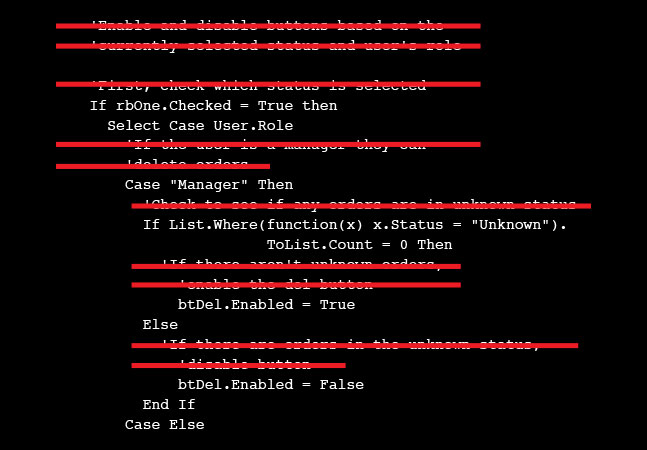
Peter looks at how rewriting some complex code -- purely to make it easier to read -- eliminates the need for writing comments. He even adds a comment to some code.

Microsoft .NET Framework 4.5 support for claims-based security can make your existing authorization system more powerful and flexible, even if you never intend to start working with third-party security providers. Plus, it's backward-compatible with virtually all of the authorization code you're already using.

The new Apple iOS stops looking like anything but a computer's UI -- but do you care?

Peter Vogel responds to the furor about his contention that developers do too much code commenting. He says that documenting code, while it may be necessary, isn't valuable.

Building your applications so that each part does just one job well makes everything easier. Peter Vogel applies that approach to a Windows Forms app and, in addition to getting it to work, creates a more responsive application.

The latest version of TypeScript adds generics but there's more in the package than that. Peter looks at what's new.

It isn't news that developers don't like documenting their code. But you have good reason not to. And if you are documenting code, try to stop! It's not too late.

In this month's column, Peter Vogel takes a single -- and common -- problem and looks at all the technologies you can use to solve it, from getting the data design correct through handling updates and finishing with a UI built in ASP.NET MVC.

Sometimes you need more than roles to effectively manage authorizing user requests. You can do that without moving to claims-based security in the Microsoft .NET Framework 4.5 by creating your own user object.

While there are several tools available to monitor your application's performance, when it comes to improving your UI, it's your understanding of your users that's critical to finding problems.

Predicate methods allow you to separate the criteria you're using to test items in a collection from the code that processes the collection. You may never write a For...Each loop again.

The IComparable interface lets you create objects that know how to sort themselves correctly. This interface also provides an example of a high-level strategy for building and extending your classes.

Your UI could work exactly the way you intended it to work and still fail during usability testing.

Even if you're not working in the Microsoft .NET Framework 4.5, .NET provides you with a way to create a read-only collection or to convert an existing List into a read-only collection.

Peter Vogel compares both of the Microsoft dependency injection managers/inversion of control containers and comes up with a decision tree for picking the correct one.